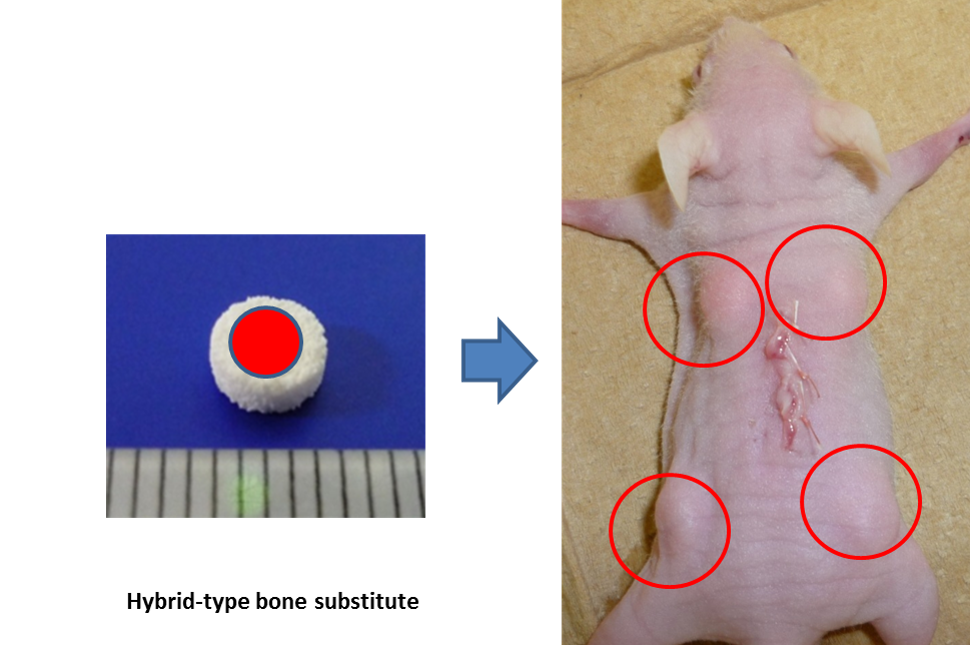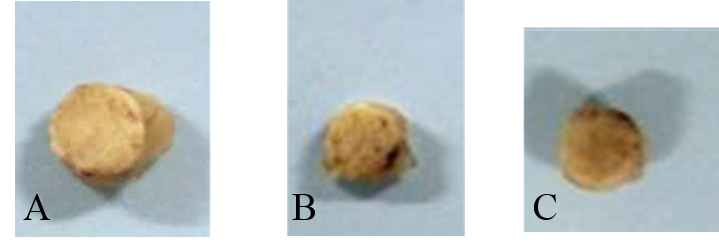Statement of Purpose: We are involved in the research and development of bone substitutes using tissue engineering with the aim of decreasing the level of surgical invasion for patients requiring multiple bone transplants. We reported excellent osteogenic capability of porous HA and hybrid-type bone substitute,and we believe that our hybrid-type bone substitute can be adapted for future clinical application. We evaluate osteogenic potential, multipotency and the safety of the human bone-tissue derived mesenchymal stromal cells (hBT-MSCs) cryopreserved 10 or more years.
Methods: We used MSCs that had undergone long-term cryopreservation at −80°C. The cells had originally been obtained after primary culture of the surplus iliac bone tissue collected during secondary bone grafting of cleft lip and palate patients performed in the Department of Plastic and Cosmetic Surgery at the Kitasato University School of Medicine.In this study, cryopreserved specimens of bone tissue-derived mesenchymal cells in our departmental stock were used. Of the available specimens, 9 had been stored for 10 or more years. 9 samples were obtained from 3 male and 6 female patient aged 5–37 years (mean age: 12.7 years). No subjects had any infections or diseases of note. We recultured hBM-MSCs in vitro following cryopreservation for ≥10 years, divided the cells into osteogenic differentiation and nondifferentiation MSC groups, and compared the cells in the two groups. we assessed in vivo assays regarding osteogenic potential as well as in vitro experiments regarding time-dependent changes in bone markers following osteogenic differentiation. As an indicator of multipotency, the cryopreserved hBT-MSCs were examined for adipogenic differentiation. Furthermore, We made a Hybrid-type bone substitute in vivo, and the mouse back transplanted into subcutaneous of back of 8 week old male nude rats and confirmed tumorigenic presence six months later (Figure 1 Transplantation into nude rats ).

Results: There are significantly more high ALP activity and calcium-producing capability. We accepted deletion in the CGH method in 1 specimen and accepted the inversion of the chromosome by the G-band method in the same part. The morphologic and gene abnormality were not accepted by cryopreserved hBT-MSCs except one case (Figure 2. Six months after the transplant procedure.A, B. Hybrid-type bone substitute grafting.
C. Control., Figure 3. Histological staining.
Hybrid-type bone substitute grafting.(case 4)
B. Hybrid-type bone substitute grafting.(case 6)
C. Hybrid-type bone substitute grafting.(case 9)
D. Control)


Conclusions: G-band methods is one of important techniques for the purpose of check of cytogenetic safety. With hBM-MSCs cryopreserved more than ten years, osteogenic potential and multipotency were maintained. The hBT-MSCs cryopreserved more than ten years may be clinically useful.
References:
[1] Takayuki Sugimoto. J Oral Tissue Engin 2013; 11(2):1-10
[2] Matsuo Aoi. J Craniofac Surg 2008; 19:693-700
[3] Takase Chikara. Kitasato Med J 2010; 40: 122-128